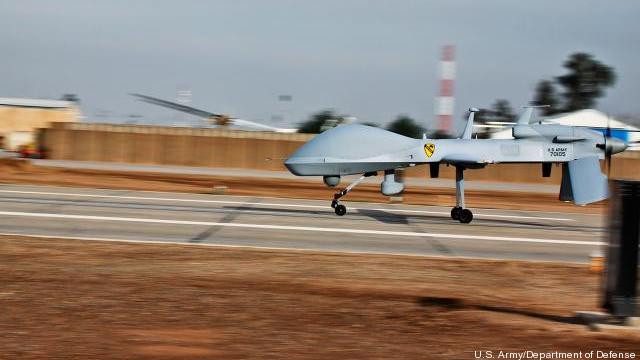 Washington: The future of armed unmanned aircraft will remain more man than machine, at least for members of the Army and Marine Corps.
Washington: The future of armed unmanned aircraft will remain more man than machine, at least for members of the Army and Marine Corps.
“We will always have a man in the loop,” Col. Stewart Hatfield, chief of the lethality branch in the Army’s unmanned requirements shop, said today at the Association of Unmanned Vehicle Systems International’s annual conference here.
Despite the technological strides made in unmanned technology, there is still “long way to go” before service chiefs are comfortable taking the soldier or Marine out of the control loop in armed UAS ops, he said.
Unmanned air strikes have been the weapon of choice for U.S counterterrorism operations, beginning in earnest under the Bush administration, with the Obama White House increasing their use in recent years.
Since then, the use of armed UAS strikes have dramatically cut down the time American troops take to find, track and take out targets on the battlefield, Hatfield said.
But being able to rein in a heavily-armed UAS if the on-board systems go haywire, is the thing that worries military leaders most about making the leap to full autonomy said James Laswell, technical director of the Marine Corps Warfighting Laboratory, at the same briefing.
Most of that concern goes back to the cultural underpinnings of the Army and Marine Corps, said former Army aviation chief Maj. Gen Rudolph Ostovich added.
The services’ dedication to protect manpower levels in their force structures has prevented them from fully embracing autonomous UAS ops, armed or unarmed, Ostovich said.
The Army in particular have never been able to make the cost savings case for replacing manpower for machines, he added. But the looming budget crunch facing the Pentagon will force the Army and the Marine Corps to reconsider that position, Ostovich added.
Senior Army leaders have noted that unmanned systems will be key to its modernization plans, but noted the service will have to move faster, to get the savings it needs to survive financially over the next few years.
Head start: Early ’25 may be first flight for Black Hawk with T901 engine
Sikorsky is using remaining FARA dollars to test out the new T901 engine in anticipation of integrating it on a UH-60 M Black Hawk later this year.


























